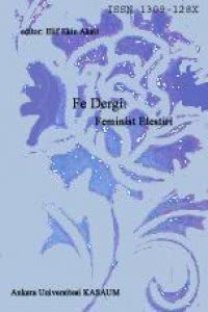Coğrafi Araştırma Yöntemlerinin Toplumsal Cinsiyet İlişkilerinin İncelenmesine Katkısı
Sosyal davranış ve mekânın birbirini nasıl karşılıklı olarak ürettiği konusuna ilginin artmasına paralel olarak sosyal bilimlerde coğrafi araştırma yöntemlerinin kullanımı da artmaktadır. Bununla birlikte, söz konusu yöntemlerin uygulanışı, ürettikleri verinin niteliği ve sahadaki deneyimlere ilişkin sınırlı sayıda kaynak mevcuttur. Bu çalışmada toplumsal cinsiyet ve sınıf dinamiklerinin kadınların mahalle düzeyinde ‘serbest zaman’ (leisure) deneyimlerini nasıl şekillendirdiğini inceleyen doktora tezimin saha deneyimlerini değerlendiriyorum. 2014-2015 yılları içinde toplamda 8 ay süren araştırmamda Türkiye’nin Bursa şehrinin, iki farklı sınıf karakterine sahip mahallesinde, yürü ve konuş görüşmeleri, haritalama tekniklerinin kullanıldığı odak grup görüşmeleri ve çeşitli leisure mekânlarında katılımlı gözlem yöntemlerini kullanarak veri elde ettim. Söz konusu yöntemler, katılımcılar için kendilerini ifade etmede sözel anlatımın sınırlarını aşabilecek yeni imkânlar sağlarken, araştırmacı için de geleneksel yüz yüze görüşmelerde akla gelmeyecek yeni soruların sorulmasına olanak sağlayan araçlardır. Bu nedenle, bu makale coğrafi araştırma yöntemlerinin toplumsal cinsiyet ilişkilerinin çok katmanlı ve karmaşık yapısını yansıtabileceğini ileri sürmektedir.
Contribution of Geographical Research Methods to the Study of Gender Relations
Geographical research methods have been increasingly used in social sciences due to the interest inhow social behaviour and space are mutually constructed. However, there is still a limited number ofstudies dealing with the application of such methods, the variety of produced data, and fieldexperiences. In this paper, I reflect on fieldwork experiences of my doctoral research, whichinvestigated how gender and class dynamics shape women’s experiences of leisure at theneighbourhood level. During the eight-month fieldwork between 2014-2015, I used the methods ofthe walk and talk interviews, focus groups with mapping exercises and participant observation inleisure spaces of two differently-classed neighbourhoods in Bursa, Turkey. These methods provideparticipants with new possibilities of expression, beyond verbal communication capacities, allowingresearchers to think about questions that may not necessarily arise in traditional sit-in interviews.Therefore, this article concludes by suggesting that geographical methods can mirror the multilayeredand complex nature of gendered social relations
___
- Bazeley, Pat and Lynn Kemp. “Mosaics, Triangles, and DNA: Metaphors for Integrated Analysis in Mixed Methods Research” Journal of Mixed Methods Research 6 (2012): 55-72.
- Brewer, John D. Ethnography. (Buckingham: Open University Press, 2000).
- Carpiano, Richard. M. “Come take a walk with me: The ‘‘Go-Along’’ interview as a novel method for studying the implications of place for health and well-being” Health & Place 15 (2008): 263– 272.
- Chick, Garry. “Culture as a Variable in the Study of Leisure” Leisure Sciences 31(3) (2009): 305-310 Clark, Andrew and Nick Emmel. “Using walking interviews” Realities 13 (2010):1-6.
- De Certeau, Michel, Girard, Luce. and Pierre, Mayol(ed.). The Practice of Everyday Life, Volume 2: Living and Cooking. (Translated by T. J. Tomasik. Minneapolis: University of Minnesota Press, 1988).
- Deem, Rosemary. All Work, No Play? (Milton Keynes: Open University Press, 1986).
- Demirbaş, Gökben. Women’s Leisure in Urban Turkey: A Comparative Neighbourhood Study. (PhD. Glasgow University, 2018).
- Denzin, N. K. “Triangulation 2.0.” Journal of Mixed Methods Research. 6, no. 2 (2012): 80–88.
- Dixey Rachel and Margaret Talbot. Women, Leisure and Bingo (Trinity and All Saints’ College: Indiana University, 1982).
- Ekin Erkan, Nihal. Toplumsal Cinsiyet Perspektifinden “Kentsel Eşitsizlik” (PhD. Marmara University, 2006).
- Erder, Sema. Kentsel Gerilim. [Urban Tension] (Ankara: Um: Ag Publishing, 1997).
- Evan, James and Phil, Jones. “The Walking Interview: Methodology, Mobility and Place” Applied Geography 31 (2011): 849-858.
- Flick, Uwe. “Mantras and Myths: The Disenchantment of Mixed-Methods Research and Revisiting Triangulation as a Perspective” Qualitative Inquiry 23, no.1 (2017): 46-57.
- Green, Eileen and Hebron, Sandra and Diana Woodward. Leisure and Gender: A Study of Sheffield Women’s Leisure Experiences (Sports Council and Economic and Social Research Council, 1987).
- Green, Eileen and Carrie Singleton. “Risky Bodies at Leisure: Young Women Negotiating Space and Place” Sociology, 40, no.5 (2006): 853–871.
- Kitzinger, Jenny. “Introducing Focus Groups” British Medical Journal 311 (1995): 299-302.
- Kusenbach, Margarethe. “Street Phenomenology: The Go-Along as Ethnographic Research Tool” Ethnography 4, no. 3 (2003): 455-485.
- O’Reilly, Karen. Key Concepts in Ethnography (London: Sage Publications, 2009).
- Reinharz, S. Feminist Methods in Social Research (Oxford: Oxford University Press, 1992).
- Skeggs, Beverley. “Matter out of Place: Visibility and Sexualities in Leisure Spaces” Leisure Studies 18 (1999): 213– 232.
- Watson, Beccy and Aarti Ratna. “Bollywood in the Park: Thinking Intersectionally About Public Leisure Space”. Leisure/Loisir. 35, no.1 (2011): 71-86.
- Wearing, Betsy. Leisure and Feminist Theory (London: Sage Publication, 1998).
- Wheeldon, Johannes. “Is A Picture Worth A Thousand Words? Using Mind Maps to Facilitate Participant Recall in Qualitative Research” The Qualitative Report 16, no.2 (2011): 509-522.
- Wheeldon, Johannes and Ahlberg, Mauri, K. Mauri K. Visualizing Social Science Research: Maps, Methods and Meaning (Thousand Oaks: Sage Publication, 2012).
- Willis, Paul. (1980). “Notes on Method” Culture, Media and Language: Working Papers in Cultural Studies, 1972-79
- ed. Stuart Hall, Dorothy Hobson, Andrew Lowe and Paul Willis (London: Routledge, 1980), 76-84.
- Zahle, Julie. “Practical Knowledge and Participant Observation” Inquiry: An Interdisciplinary Journal of Philosophy 55, no.1 (2012): 50-65.
- ISSN: 1309-128X
- Yayın Aralığı: Yılda 2 Sayı
- Başlangıç: 2008
- Yayıncı: Ankara Üniversitesi KASAUM
Sayıdaki Diğer Makaleler
Depresyon ve Modern Düşüncenin Eril Dikotomileri
Ülkücü Kadınlar ve Kadın Kimliğinin İnşası: “Asenalar”
Video Temelli Mülakatlarda Kadına Yönelik Şiddet
Coğrafi Araştırma Yöntemlerinin Toplumsal Cinsiyet İlişkilerinin İncelenmesine Katkısı
Kadınlık ve Erkekliğin Değişmeyen Halleri: Televizyon Dizilerinde Toplumsal Cinsiyet
Benzeşen/Farkılaşan Çerçeveler: Türkiye’deki İslamcı Kadın STK’lar Örneği
Asuman Özgür KEYSAN, Zelal ÖZDEMİR
Anneler Ne Yapar, Kızları Ne İster? İki Nesil Kadın Anlatılarında Bir Gecekondu Mahallesi
Süryaniliğin Kadınların Aile Yaşamına Kültürel Yansıması: Midyat Örneği
